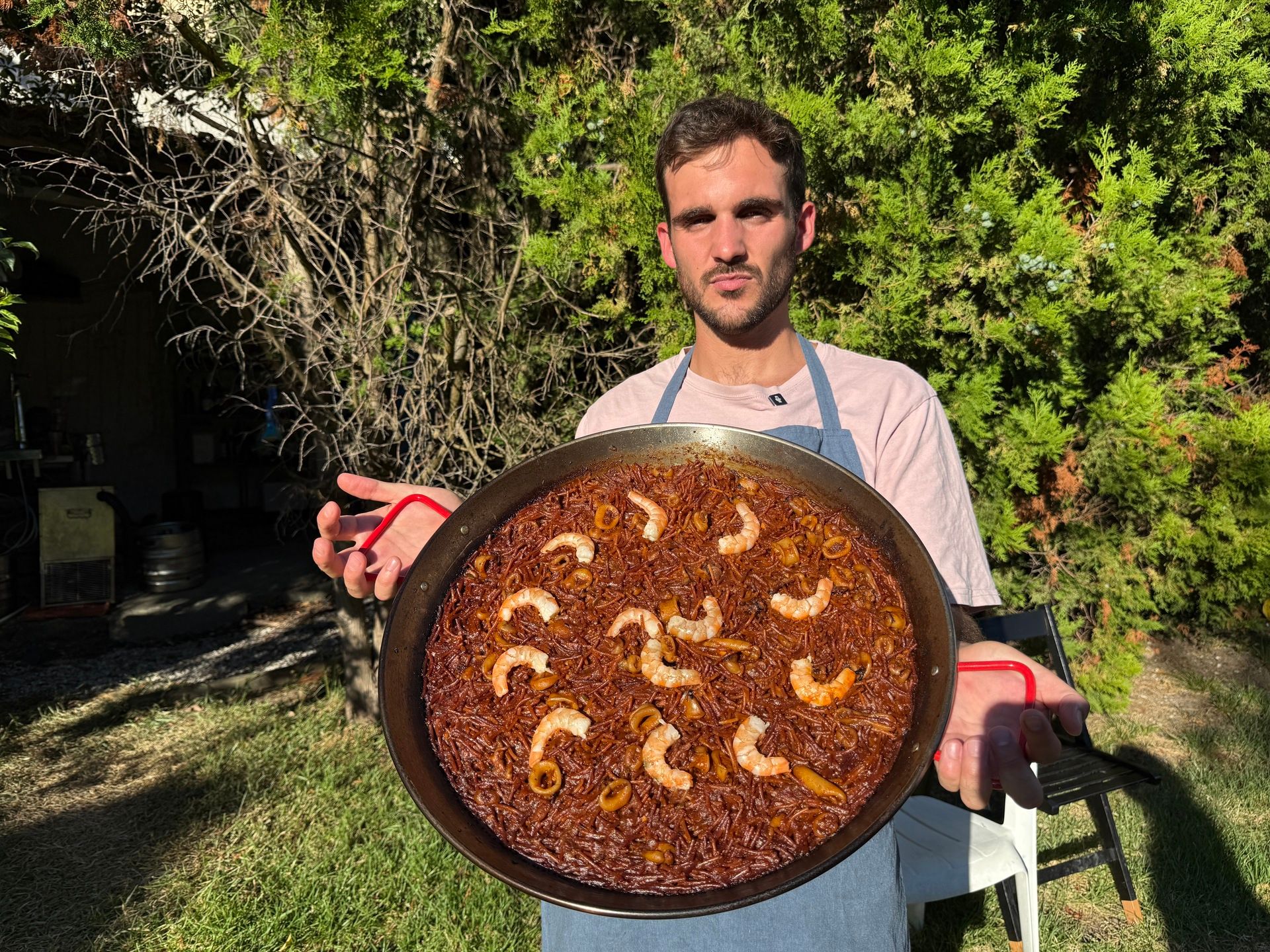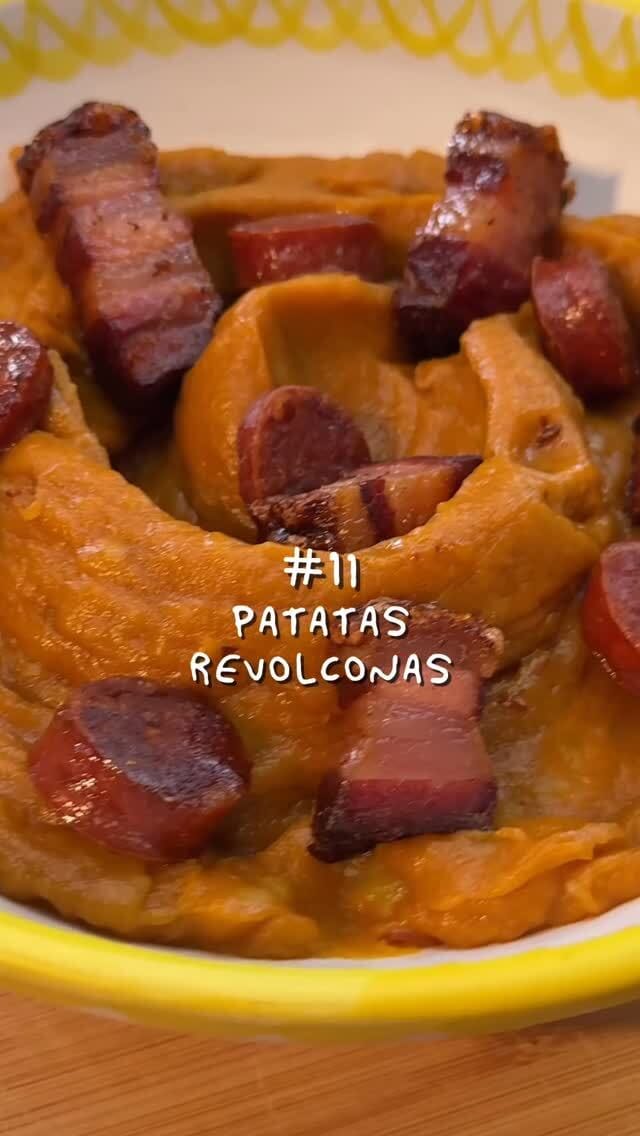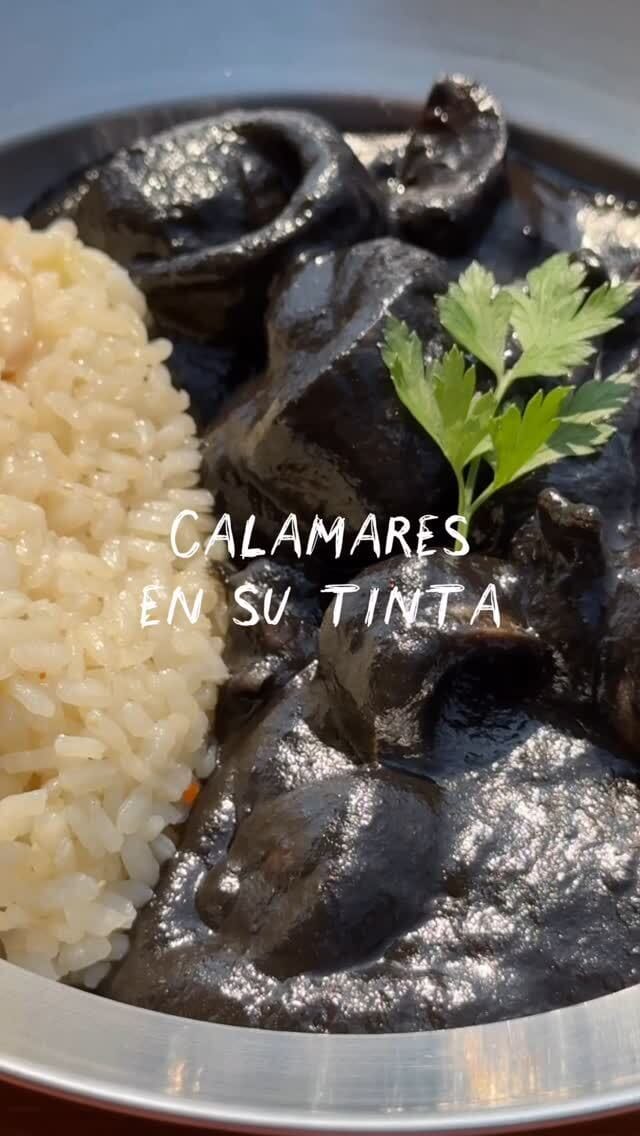- LA SOBREMESA
- Posts
- Why is no one talking about fideuà?
Why is no one talking about fideuà?
While rice paella gets all the fame for foraigners... this "pasta paella" recipe is as interesting, and sometimes even way more delicious!

Hi team!
Summer is being just as busy as expected… so I haven’t had as much time to ramble around here as I’d like. Sorry about that.
Still, I wanted to follow up and share some of the recipes and videos I’ve posted over the past month.
If you don’t know what fideuà is… Watch this right now!
Just posted one of my versions of fideuà, paella’s pasta cousin that absolutely slaps. I’d be lying if I said it’s better than paella—because, well, it’s just not fair to compare them. It’s like asking a mother to choose her favorite child.
That said, I genuinely don’t get why paella got all the fame and this dish didn’t. The technique and method are pretty much the same—we’re just switching out the carbs. I totally recommend giving it a try. And, as always, happy to read your thoughts, either in the YouTube comments or right here in this article.
Ingredients for 4-6 servings:
500 g thin fideuà pasta
1.25 kg fish stock (fumet)
12 prawns (langostinos)
350 g squid (cleaned and chopped)
1 onion (approx. 160 g)
1 green bell pepper (approx. 50 g)
3 grated tomatoes (approx. 190 g)
2 tbsp ñora or choricero pepper paste
1 tsp sweet paprika
4 garlic cloves
Extra virgin olive oil
Salt
Another Vlog! Eating my way through Portamerica music and gastronomy festival
PortAmérica is a festival held in the south of Galicia, where the best of music and gastronomy from both sides of the Atlantic come together.
I actually went to this fest a couple of times as a kid to enjoy the concerts… and later worked in the gastro area for two years!
Pepe Solla, from Restaurante Casa Solla in Poio, Pontevedra (the oldest Michelin-starred restaurant in Spain), leads the ShowRocking—a wild and beautiful mix of live cooking, surprise concerts, and pure rock ’n’ roll.
Top chefs from Spain and Latin America (+15 michelin stars in total!) showcase their skills, merging fine dining with finger food—festival-friendly and full of flavor.
As a young stager, this festival gave me the chance to work alongside some of my idols, and many other chefs who later became key references for me.
This year, I was lucky enough to go back—but this time, to try all the pintxos and make a YouTube video out of it. We had a blast, tried over 35 pintxos from top chefs, and filmed the whole thing so you can come along for the ride.
If that sounds good… watch it here:
By the way—YouTube is the platform that really lets me create independent, valuable content without worrying about some dumb scrolling algorithm or needing sponsors to fund the project. So if you haven’t yet, I’d love it if you hit that “subscribe” button below. It really helps me keep making videos like this!
Recipes of the month
Patatas revolconas
New PTSW!! This time, one of those recipes that we wish we could eat every day… but we definetely can’t. But sometimes it’s cool to treat yourself, right?
Recipe
4 potatoes (450 g)
1 strip of cured, air dried pork belly (for the torrezno)
1 chorizo
3 tbsp olive oil
1 tbsp smoked paprika
Salt to taste
Method
Peel and evenly cut the potatoes. Boil them in salted water for 20–30 minutes, or until soft.
For the torrezno, make sure you're using a cured and air-dried piece—that's what makes the skin puff. Start skin-side down in a pan with a little oil, cooking low and slow for 30–40 minutes. Then take it out, heat more oil, and fry it briefly until the skin puffs like a dream. Don’t overdo it or the inside will dry out.
Slice and sauté the chorizo for 5 minutes, then add the torrezno to the pan to release some of that beautiful fat. Set both aside and use that same fat to gently fry the sliced garlic. After 5 minutes, add the smoked paprika, then immediately the potatoes.
Mash everything directly in the pan until smooth and silky. Add a splash of the potato water if needed.
Top with your crispy torrezno and spicy chorizo. Serve with pride—and get ready for a well-deserved fat siesta
🫡Enjoy!
Calamares en su tinta
Ingredients
1 kg squid
16 g squid ink (about 4 sachets)
600 g green bell pepper
600 g onion
400 g leek
4–5 garlic cloves
300 g tomato
2 bird’s eye cayenne peppers (or to taste)
½ cup brandy (or enough to deglaze the pan when searing the squid)
1 cup white vermouth (or white wine)
Water (as needed)
Salt
Extra virgin olive oil
Method
Peel the tomato and evenly cut all the veggies. Start the sofrito by adding a generous amount of olive oil and the garlic to a cold pot. Turn the heat to max, and once the garlic starts dancing, add the onion, leek, and green pepper—in three batches—to let the temperature rise again after each addition. Season with salt at the end.
Sauté everything until the vegetables develop some golden color and the bottom of the pot forms a nice brown fond. Then add the tomato and stir for a couple of minutes to deglaze the pot with its moisture.
Let the sofrito cook over medium heat for another 5 minutes. Add the squid ink, mix well, and cook for another 25 minutes.
Meanwhile, clean the squid—but don’t cut it yet. Keeping it whole makes it easier to remove when it’s time to blend the sauce.
Sear the squid in a well-preheated pan over maximum heat with a little oil. It should develop some golden color within 2 minutes. Deglaze the pan with brandy, then pour everything into the sofrito pot.
Add the vermouth, cover with water, and simmer for 30 minutes, depending on the size of your squid.
Remove the squid, cut it into bite-sized pieces, and blend the sauce until smooth.
Return everything to the pot, bring it to a boil, and serve with white rice—the perfect pairing for this rich and intense sauce.





Reply